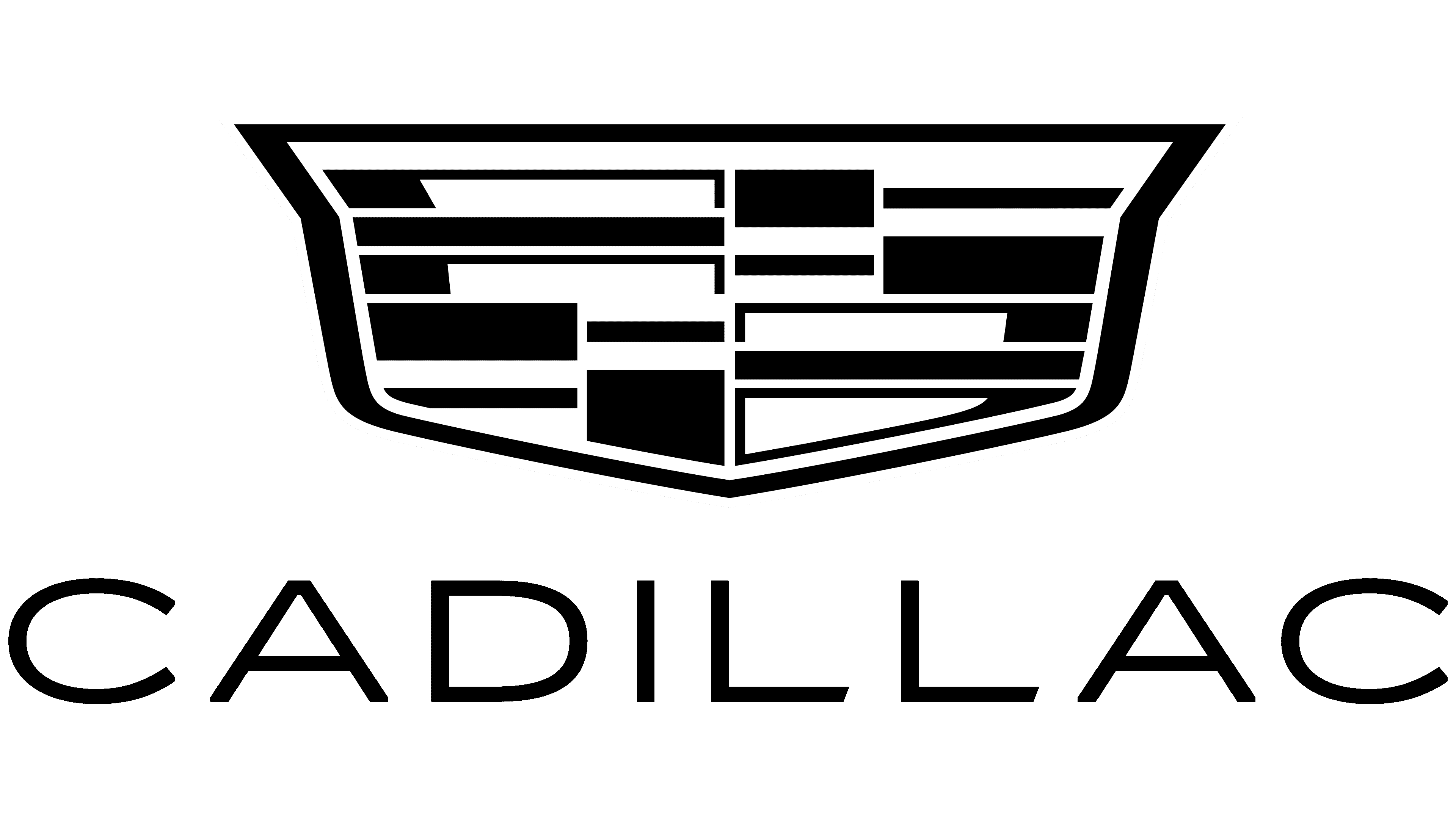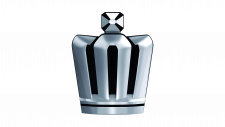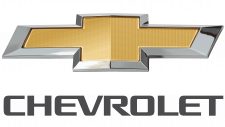Cadillac Logo
Cadillac, an emblematic name in the automobile realm, is an American luxury vehicle marque. Currently, the brand is pioneering innovations in the luxury electric vehicle sector, aiming to lead the EV transformation. Its primary market remains North America, although it has made significant inroads into markets like China. As a division of the global automotive giant, General Motors (GM), Cadillac operates under GM’s stewardship. The brand continues its legacy of blending craftsmanship with technological prowess, ensuring its vehicles remain symbols of luxury and advancement.
Meaning and history
Cadillac, established in 1902, traces its origins to the remnants of the Henry Ford Company, after Henry Ford left due to disputes. Named after the explorer Antoine Laumet de La Mothe, sieur de Cadillac, who founded Detroit in 1701, Cadillac quickly earned a reputation for its precision engineering and was dubbed the “Standard of the World.”
In 1909, Cadillac’s prominence caught the attention of General Motors (GM), which acquired the company, making Cadillac its luxury vehicle division. Under GM, Cadillac introduced various innovations, like the electric self-starter in 1912 and the clashless Synchro-Mesh manual transmission in 1928.
The post-war era saw Cadillac’s dominance in the luxury car market, with iconic models like the Eldorado. By the 1950s and 1960s, tailfins and chrome became signature Cadillac design elements.
However, the oil crisis of the 1970s presented challenges. Cadillac had to reevaluate its large, fuel-inefficient models, leading to the release of the smaller Cadillac Seville in 1975.
The 1980s and 1990s were tumultuous times for Cadillac. Japanese and European luxury brands began to gain a foothold in the U.S. market. Cadillac tried to compete by diversifying its lineup, with varying degrees of success.
In the 21st century, Cadillac rejuvenated its brand image, focusing on performance and technology. Models like the CTS and the electric ELR hybrid signaled Cadillac’s commitment to modern luxury and sustainability.
Throughout its existence, while ownership and production strategies evolved, Cadillac’s essence remained: an unwavering commitment to luxury and innovation. Today, as it steers towards an electric future, Cadillac upholds its rich legacy, blending traditional opulence with contemporary advancements.
1902 – 1905
Central to this design is an opulent crest emblem, replete with meticulous detailing reminiscent of heraldry from bygone eras. Encased within this crest are intricate patterns and figures, possibly merlettes, arranged in an organized yet artful manner. Colors like gold, silver, and black dominate the palette, imparting an essence of grandeur and luxury. Above the crest, a crown studded with jewels stands as a testament to regality and high standards. This emblem, with its ornate elements and sophisticated palette, encapsulates Cadillac’s early commitment to craftsmanship and luxury. Every aspect, from the detailed patterns to the majestic crown, harmoniously melds to convey the brand’s illustrious heritage.
1905 – 1906
During its initial years, the emblem closely mirrored the design and contours of what was believed to be a French aristocratic crest. This logo was anchored by a shield adorned with swans and parallel striations. A regal crown sat atop this arrangement. Surrounding the shield, a circular motif with an ornate border highlighted its noble essence. Inscribed beneath the shield read “La Mothe Cadillac,” positioned towards the logo’s base. The emblem’s designers were profoundly influenced by the familial crest of Detroit’s founder. This distinctive badge for the Cadillac automobile was officially trademarked in 1906.
1906 – 1908
Currently, multiple narratives surround the genesis of the logo. Amongst the brand’s aficionados, a folklore persists that the emblem traces its roots pre-dating Christopher Columbus’s discovery of America. It’s believed to represent the heraldry of an ancient lineage of Toulouse counts, which explains its resemblance to old French crests.
However, exhaustive investigations revealed no official ties between Antoine de la Cadillac and any prestigious French households. It’s posited that the automotive brand’s iconic founder may have woven tales of a noble ancestry to bolster the image of a then-emerging car company. The emblem we recognize today is strikingly akin to the crest of the renowned French La Motte clan.
1908 – 1914
Prior to the outbreak of the First World War, during the initial surge of the auto sector, the Cadillac emblem underwent a transformation, taking on a more vibrant and pronounced design that reflected the brand’s rapid growth and prestige. The badge’s frame grew considerably bolder and now sat over the primary symbol, retaining the iconic crown motif. Replacing the initial wording, the catchphrase “World Standard” was newly introduced, positioned beneath the shield.
1914 – 1915
During the early stages of World War I, the company’s emblem saw subtle modifications. The brand’s aesthetics were already identifiable to a broad swath of the American populace. Given the limited competition of that era, its visual identity wasn’t a paramount concern. Subtle refinements were made to the contours of the shield and the typeface of the lettering. In tandem with the evolving, less angular designs of the brand’s vehicles, the logo adopted a more rounded demeanor.
1915 – 1920
During the latter stages of World War I, the emblem underwent a notable transformation, integrating leaves flanking the shield. This adaptation aimed to counterbalance the war’s harrowing impacts, pivoting towards more peaceful sentiments. Cadillac vehicles started marking their presence ubiquitously across the U.S. and internationally. Their signature, bolstered by an elegantly crafted logo, rendered these automotive marvels instantly identifiable, solidifying their stature among the global elite of car producers.
1920 – 1925
As the 1920s dawned, the Cadillac insignia experienced an overhaul, discarding the previous textual elements. In a nod to the brand’s original imagery, a decorative tulip circle was integrated, highlighting the company’s vibrant identity. The crown, previously a prominent feature, underwent a substantial redesign. Now adorned with seven distinct protrusions, it showcased a renewed sense of majesty. Meanwhile, the shield portion of the logo retained much of its earlier design, albeit with enhanced intricacy and detailing.
1925 – 1926
In 1925, Cadillac adopted an emblem bearing a resemblance to a hex nut. Within this eight-sided form, a ringed circle was situated. Inside this circle, the distinguished Cadillac crest was showcased, segmented into four distinct quarters and surmounted by an elevated regal crown. Additionally, the emblem prominently displayed the brand’s name, affirming its identity and legacy in the automotive world.
1926 – 1930
Following the emblem’s transformation, textual elements were eliminated. The encompassing ring and octagonal shape were no longer present, replaced by a distinctive shield nested within another uniquely designed shield featuring a tapered base and extended top edges. Central to the design remained the iconic crown and the emblematic motifs, retaining the brand’s essence and legacy. This particular branding remained Cadillac’s signature until the closing years of the 1920s.
1930 – 1932
Following a subsequent refresh, the Cadillac insignia emerged crisper and intricately delineated. Through a deliberate decision, the creative minds behind the design decided to strip away any superfluous elements. This left the core components untouched: a shield adorned with avian figures and parallel lines, crowned by a pronounced regal crest overhead. The result was a minimalistic yet potent symbol, capturing the essence of Cadillac’s heritage while projecting a modern flair that resonates with today’s audience.
1932 – 1933
In 1932, the Cadillac emblem underwent a transformative redesign. Gone was the iconic shield, replaced by expansive bird wings, meticulously detailed with individual feathers. These wings were anchored to an avant-garde assemblage of geometric shapes, surmounted by a regal crown. At the core of this artistic rendition was a deep-black circle, encased within a dual-layered concentric ring, adding depth and distinction to the overall design. This creative departure presented a fresh interpretation of the brand’s legacy, melding tradition with contemporary artistry.
1933 – 1939
As American aviation began its ascent and widespread adoption, Cadillac sought to tap into this burgeoning zeitgeist for its brand imagery. Drawing inspiration from the skies and the promise they held, the company introduced wings into its emblem. This design choice not only aligned Cadillac with progress and innovation but also encapsulated a hopeful and forward-looking vision. The wings symbolized freedom, expansion, and the limitless possibilities of the future, seamlessly blending the company’s automotive legacy with the spirit of the times. This strategic move showcased Cadillac’s adaptability and its intent to resonate with the aspirations of a new era.
1939 – 1942
In 1939, as the clouds of World War II began to gather, Cadillac unveiled a revamped emblem. This updated design mirrored the era’s industrial advancements – the once-fluid wings now presented a structured, triangular silhouette crowned at its peak. Nestled within this triangle was the emblematic swan coat of arms, staying true to the brand’s heritage hues. The emblem’s gleaming chrome finish highlighted its sharp metallic contours, subtly hinting at the contemporary craftsmanship of the vehicles they represented. This redesign not only encapsulated the spirit of the times but also showcased Cadillac’s commitment to innovation amidst global change.
1942 – 1947
In 1942, Cadillac showcased its reimagined brand identity, revealing a freshly conceived emblem. This latest visual representation saw the wings adopting an ascendant trajectory. At the emblem’s core sat a redefined crown, symbolizing Cadillac’s regal stature in the automotive realm. Beneath this, the timeless coat of arms was now accompanied by a prominently featured shield, underscoring the brand’s commitment to vehicle comfort and fortification. This redesign subtly conveyed the message that while Cadillac honored its legacy, it also prioritized the evolving needs and aspirations of its clientele.
1947 – 1949
At the pinnacle of the emblem sat a reimagined coat of arms crowned by a contemporary rendition of a regal diadem. This upper section seamlessly transitioned into a pair of mirror-image triangles, converging to resemble the tip of a spear. Embedded within the design was a monochromatic motif reminiscent of the letter “V,” adding depth and intrigue to the logo. This reinvention subtly blended elements of heritage and innovation, presenting a symbol that both acknowledged the brand’s storied past and hinted at a forward-moving trajectory.
1949 – 1952
The emblem Cadillac showcased in the post-war era resonates with contemporary enthusiasts and loyalists of the brand. A balanced V-like motif, coupled with its ever-present crowning element, became defining features. While the color palette remained consistent, vehicle aficionados took it upon themselves to meticulously buff this distinctive mark, ensuring their vehicular companions exuded a modern luster and an aura of distinction. The design not only symbolized the brand’s heritage but also reflected the owner’s commitment to maintaining the car’s elegance and esteemed stature in the automotive realm.
1952 – 1953
At its heart is a classic crest design, adorned with intricate details reminiscent of heraldic emblems. Six distinctive figures, likely merlettes, are symmetrically arranged within the crest. Above them, a crown signifies regality, while below, a red banner stands out. The color scheme is a harmonious blend of golds, silvers, blacks, and reds, imparting an air of luxury and elegance. Notably, the year “1952” is subtly integrated, emphasizing the logo’s vintage origins. The design’s complexity and finesse reflect Cadillac’s legacy as a pioneer in the automotive realm, showcasing both its rich history and commitment to excellence. Every element, from the merlettes to the crown, works in tandem to encapsulate the brand’s storied past and prestigious reputation.
1953 – 1956
The creative team decided to eliminate the dual gold lines that bore a resemblance to the alphabet “V.” What remained was a vibrant, segmented shield adorned with glinting “gemstones.” This shield was bifurcated: the left being illuminated and the right showcasing a more muted shade. Atop this shield, as in previous designs, triangular spires of the crown were present, each punctuated with circular embellishments. This revamped design represented a blend of tradition and modernity, subtly capturing the brand’s evolution while holding onto elements of its storied past.
1956 – 1960
The mid-20th century marked a pivotal era for numerous titans of the automobile world. Amid intense rivalry from European and Japanese counterparts, there was a strategic move to accentuate the brand’s American roots. This involved resurrecting traditional design elements, enriched with contemporary touches. One such touch was the iconic “V” symbol, which by then had become a hallmark known to a vast consumer base. The emblem was expanded horizontally, and the time-honored crown was prominently showcased, giving a fresh spin to the brand’s historical insignia while highlighting its rich legacy.
1960 – 1963
During the early 1960s, Cadillac experimented with a logo variant that departed from their traditional shield emblem. This distinctive design took the form of a V-shaped insignia, embellished with intricate elements borrowed from the standard shield motif – including stripes and bird silhouettes. Instead of the customary crown teeth, this unconventional rendition featured rounded elements adorned with small black dots at their peaks. The central portion of this automotive emblem boasted a silvery hue with a gradient effect.
This innovative logo variant marked a departure from Cadillac’s usual branding, showcasing the company’s willingness to explore fresh design avenues during that era. While it didn’t become the enduring face of the brand, it serves as a testament to Cadillac’s creative spirit and commitment to pushing the boundaries of automotive design. Over the years, Cadillac has continued to evolve its logo, demonstrating a dedication to staying at the forefront of automotive excellence.
1963 – 1964
In 1963, Cadillac introduced an iconic emblem that would serve as the cornerstone of the company’s corporate identity for more than four decades. This timeless logo features a vibrant, multi-hued coat of arms encircled by an elegant silver wreath. Comprising shades of yellow, blue, and fuchsia, coupled with intricate white and black accents, this emblem exudes an unparalleled sense of creativity and contemporary flair, setting it apart from a multitude of competitors.
For over 40 years, this emblem has proudly adorned Cadillac vehicles, symbolizing not only the brand’s rich heritage but also its unwavering commitment to innovation and distinction. With a vivid color palette and meticulously designed details, the logo has consistently captured the essence of Cadillac’s pursuit of excellence.
1964 – 1965
In the years 1964-1965, Cadillac embarked on a process of simplification for their logo. While the emblem retained its essential components of a heraldic shield adorned with various symbolic elements and a stylized crown atop it, the design underwent a substantial transformation under the skilled hands of the designers. In this revision, the palette was stripped down to a minimalist selection, primarily comprising shades of gray and silver. This deliberate choice imparted an appearance akin to intricate metal embossing to the patterns adorning the emblem.
This revamped logo captured a sense of refined elegance and sophistication through its monochromatic aesthetics. By embracing a more subdued color scheme, Cadillac conveyed a subdued yet enduring sense of luxury, symbolizing the brand’s commitment to timeless style and craftsmanship. This emblem revision reflected Cadillac’s ever-evolving quest for design excellence, resonating with automotive enthusiasts and connoisseurs alike. Throughout its history, Cadillac has consistently adapted and innovated to remain a symbol of automotive prestige.
1965 – 1971
Once again, a burst of color revitalized the Cadillac shield emblem, introducing a captivating contrast between its right and left sides. A striking feature emerged as a thin, subtle shadow in a dark gray hue enveloped the right and lower regions of the emblem, its edges gently blurred for a touch of visual depth and dimension. Furthermore, the emblem welcomed back a distinctive element in the shape of the letter “V,” a nod to the brand’s legacy and continued evolution.
This renewed logo design breathed fresh life into the Cadillac brand, infusing it with a dynamic energy while retaining a sense of heritage. The interplay of colors and the reintroduction of the “V” added a layer of sophistication and modernity, exemplifying Cadillac’s dedication to reimagining its visual identity to resonate with contemporary audiences while honoring its storied history. This emblem represents the brand’s ongoing commitment to innovation and forward-thinking design.
1971 – 1980
In the year 1971, the Cadillac logo underwent a distinctive transformation, adopting an unconventional and intriguing shape. This emblem bore a striking resemblance to an upraised sword, featuring a forked blade, and simultaneously evoked the image of an abstract animal head adorned with elongated horns. Situated beneath this unique design, the traditional shield and crown elements found their place within the “hilt” of this emblem.
One of the defining characteristics of this logo was its metallic sheen, which lent it a captivating luster. This innovative design departure marked a bold step for Cadillac, reflecting the brand’s willingness to explore new horizons in visual identity. While not a permanent fixture in the brand’s history, this emblem served as a testament to Cadillac’s penchant for creativity and its commitment to pushing the boundaries of automotive design. Throughout the years, Cadillac’s logos have continued to evolve, embodying the brand’s enduring spirit of innovation and excellence.
1980 – 1985
The protective shield found its place within an intricate wreath, meticulously crafted from the intertwining of two graceful branches. This rendition was adorned with somber and muted hues, casting an aura of understated elegance. The avian figures, however, were rendered with a subtlety that rendered them nearly imperceptible amidst the tapestry of surrounding motifs. Their delicate forms seemed to blend seamlessly with the intricate patterns that enveloped them, creating an enigmatic fusion of artistry and camouflage. The subdued palette, dominated by shadows and subdued tones, imbued the composition with an air of mystery, inviting contemplation and curiosity. Within this enigmatic tableau, the shield’s presence remained both a sentinel and a secret, nestled within the cryptic tapestry of nature’s design.
As we delve deeper into this enigmatic world, we discover that the fusion of form and function transcends the ordinary, inviting us to explore the depths of creativity and imagination. The shield, though unobtrusive in its positioning, stands as a symbol of protection and resilience, hidden in plain sight within the intricate folds of the wreath. The branches themselves, entwined in an intricate dance of unity, symbolize the interconnection of life’s elements, where strength is found in harmony.
The subdued color palette, with its rich tapestry of dark and muted shades, evokes a sense of timelessness, as if this work of art has existed for centuries, silently witnessing the passage of time. Each stroke of the artist’s brush, every meticulously crafted detail, contributes to the creation of a masterpiece that transcends the boundaries of mere decoration. It is a testament to the power of art to transform the ordinary into the extraordinary, to hide meaning in plain view, and to inspire wonder in those who are willing to seek it.
In this intricate tapestry of nature and artistry, the shield remains a guardian of secrets, a silent sentinel within the folds of branches, awaiting those who dare to unravel its mysteries and appreciate the beauty hidden within.
1985 – 1995
Back in 1985, a curious transformation took place, lending a subtle bronze hue to all things silver. Among the affected elements, the wreath underwent a notable metamorphosis, with its once-vivid colors now graced by understated gray outlines that gracefully delineate and isolate each individual leaf. This newfound delineation brought forth a striking contrast within the composition.
Within this altered landscape, the image of the birds emerged with newfound clarity, like radiant beacons within the canvas. They materialized prominently within vibrant yellow rectangles, their forms infused with a captivating vitality against the more subdued backdrop. This juxtaposition of vividness against muted tones added a layer of intrigue and vibrancy to the overall presentation.
This year of 1985 marked a turning point, as silver assumed an unexpected bronze patina, breathing fresh life into the wreath’s aesthetics. The once-subtle details of the composition were now boldly defined by gray outlines, while the avian motifs, bathed in the luminosity of yellow rectangles, stood as prominent symbols of beauty and contrast, beckoning viewers to explore the nuances of this captivating transformation.
1995 – 1999
In the year 1995, a significant evolution unfolded within the realm of the logo, embracing a transformative shift towards a more streamlined and minimalist aesthetic. Amidst this creative transition, all the iconic elements, including the regal crown, the sturdy shield, the graceful birds, the vibrant multi-colored quadrangles, and the intricate wreath, retained their rightful positions, preserving the essence of the brand’s heritage.
Notably, the once-unified wreath underwent a remarkable transformation, as its leaves were now artfully depicted individually, generously spaced apart, allowing each one to breathe and command its own presence within the emblematic design. This novel approach to the wreath lent an air of sophistication and distinction to the overall composition.
At the base of this emblem, the word “Cadillac” found its place in elegant blue script, a testament to the brand’s enduring legacy and unwavering commitment to excellence. This calligraphic touch served as the final flourish, harmonizing seamlessly with the logo’s newfound two-dimensional and minimalistic identity.
The year 1995 marked a pivotal moment in the logo’s history, where tradition met innovation, resulting in a design that celebrated both continuity and modernity. This transformation honored the brand’s heritage while embracing a fresh, contemporary sensibility, encapsulating the essence of Cadillac’s timeless allure.
1999 – 2009
As we approached the dawn of the new century, the logo underwent a profound transformation, characterized by intricate detailing and a heightened sense of style, mirroring the era’s burgeoning technological advancements and evolving design sensibilities. The visionary designers embarked on a journey to blend the timeless elegance of a classic coat of arms with the sleek contours reminiscent of the early 1900s, infusing it with a contemporary twist through the introduction of metallic embellishments.
This infusion of metallic accents bestowed upon the coat of arms a cutting-edge aesthetic and progressive allure. The precision and sharpness of the lines within the design served to underscore the brand’s position in the upper echelons of the automotive world, symbolizing its elite status within the industry.
At the turn of the century, this logo embodied the harmonious marriage of tradition and innovation, capturing the essence of the brand’s storied heritage while boldly embracing the modernity of the times. It stood as a testament to the brand’s commitment to excellence and its unyielding pursuit of progress and distinction in the automotive landscape.
2009 – 2014
The designers embarked on a journey to intricately refine the Cadillac logo, infusing it with a newfound complexity through the addition of meticulously crafted details. Most notably, this transformation was manifested in the colored rectangles, which underwent a remarkable evolution, now adorned with a multitude of slender stripes that intricately interwove within the geometric confines.
Within this intricate tapestry, a dominant silver-gray gradient prevailed, casting an elegant yet contemporary aura. This gradient was further enriched by subtle white reflections, adding depth and dimension to the overall composition. The interplay of light and shadow within these elements contributed to a dynamic and engaging visual experience.
The redesigned logo of Cadillac, with its fusion of complexity and sophistication, became a symbol of the brand’s commitment to pushing the boundaries of design and aesthetics. It celebrated the marriage of innovation and artistry, encapsulating the brand’s legacy of excellence while signaling its readiness to embrace the future.
2014 – 2021
In the year 2014, a significant decision marked a transformative moment for the company as it embarked on a journey to strip its logo of all decorative elements. The company’s visual identity pivoted towards a modernized rendition of its iconic coat of arms, now elegantly rendered in italics. This strategic shift aimed to underscore the brand’s unerring sense of refinement, placing emphasis on sleek and sophisticated lines within the lettering that harmoniously balanced the coat of arms’ austere form.
The Cadillac logo stands as a pinnacle of distinction in the contemporary premium automobile market. The brand steadfastly maintains the timeless color palette that was originally established at the outset of the previous century, ensuring that the coat of arms remains an enduring emblematic hallmark for over a century. The nuanced interplay of line thicknesses within the logo, akin to a mosaic, serves as a testament to the brand’s rich heritage and its illustrious journey toward becoming one of the most recognizable names in the automotive industry. It symbolizes a legacy of craftsmanship and an indomitable commitment to excellence that spans generations.
2021 – Today
In the year 2021, Cadillac, the renowned automaker, undertook a significant logo transformation to align itself with the dawn of a new era, coinciding with the launch of their electric SUVs under the Lyriq brand. The outcome of this endeavor was the creation of a monochromatic icon, a design that may appear deceptively simple at first glance but harbors a captivating secret: a captivating backlight that graces the surface of their vehicles.
While the essence of the iconic shield was retained, the logo’s evolution was marked by the removal of all symbolic elements, leaving behind a structure composed solely of polygons. The emblem’s palette transitioned to a stark black and white composition, enhancing its timeless appeal and modernity. Simultaneously, the company’s nameplate underwent a significant transformation, replacing the erstwhile elegant handwritten font with a more austere grotesque typeface, further aligning it with the brand’s contemporary vision.
The Cadillac logo, thus reimagined, represents a fusion of tradition and innovation, where simplicity conceals a subtle sophistication, and where the past seamlessly merges with the future. It symbolizes the brand’s unwavering commitment to embracing the electric age while upholding its legacy of automotive excellence.










































